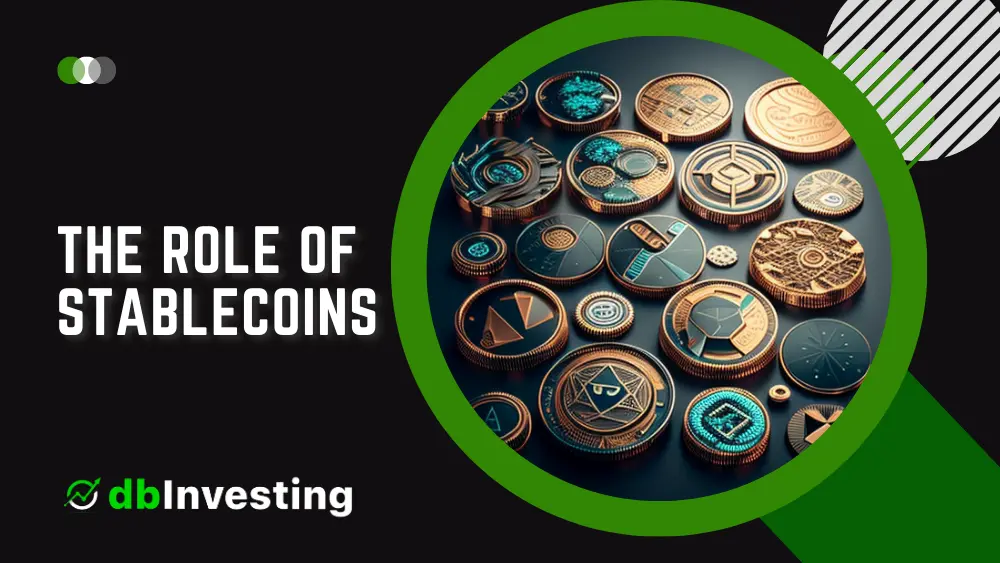Cryptocurrencies have been gaining popularity in recent years as an alternative to traditional forms of currency. However, the high volatility associated with cryptocurrencies such as Bitcoin has led to a need for more stable options.
This is where stablecoins come in. Stablecoins are cryptocurrencies that are pegged to a stable asset such as fiat currency, gold, or other cryptocurrencies. In this article, we will provide a comprehensive overview of the role of stablecoins in the cryptocurrency market.
What Are Stablecoins?
Stablecoins are a form of cryptocurrency that are designed to maintain a stable value. They are often pegged to a specific asset or basket of assets, such as a fiat currency, gold, or other cryptocurrencies.
This makes them less volatile than traditional cryptocurrencies such as Bitcoin, which can experience significant price fluctuations within a short period of time.
Stablecoins are usually created through a process called collateralization, in which the issuer holds a reserve of the underlying asset to back the stablecoin. For example, a stablecoin that is pegged to the US dollar may be backed by a reserve of US dollars held by the issuer.

Benefits of Stablecoins
- Stability: Stablecoins offer users a more stable investment option compared to traditional cryptocurrencies, which are known for their high volatility. This makes stablecoins an attractive option for investors who are looking for a more predictable return on their investment.
- Fast Transactions: Stablecoins can be used for fast and low-cost transactions across borders. This is because stablecoins are not subject to the same regulations and restrictions as traditional currencies, making them a more flexible option for cross-border transactions.
- Privacy: Stablecoins offer users a high degree of privacy, as transactions are often conducted on decentralized platforms that do not require users to disclose their personal information.
- Decentralization: Stablecoins are often created and traded on decentralized platforms, making them less susceptible to government regulation and control. This means that stablecoins offer users a greater degree of financial freedom and autonomy.
Drawbacks of Stablecoins
- Centralization Risk: Despite being designed to operate on decentralized platforms, many stablecoins are still issued and controlled by a centralized authority. This means that there is a risk that the issuer may manipulate the price of the stablecoin by manipulating the reserve of the underlying asset.
- Lack of Regulation: Stablecoins are not currently regulated by most governments, which means that users are not protected by the same consumer protection laws as they are when using traditional currencies.
- Counterparty Risk: Some stablecoins may require users to trust a third-party to hold the reserve of the underlying asset. This creates a counterparty risk, as the user is relying on the third-party to hold the reserve securely and honestly.

Types of Stablecoins
- Fiat-Collateralized Stablecoins: These stablecoins are backed by a reserve of fiat currency, such as the US dollar or Euro. Examples of fiat-collateralized stablecoins include Tether (USDT) and USD Coin (USDC).
- Cryptocurrency-Collateralized Stablecoins: These stablecoins are backed by a reserve of other cryptocurrencies, such as Bitcoin or Ethereum. Examples of cryptocurrency-collateralized stablecoins include DAI and BitUSD.
- Commodity-Collateralized Stablecoins: These stablecoins are backed by a reserve of a commodity, such as gold or silver. Examples of commodity-collateralized stablecoins include DigixDAO and PAX Gold.
- Algorithmic Stablecoins: These stablecoins are not backed by any physical asset, but rather use a complex algorithm to maintain a stable value. Examples of algorithmic stablecoins include Basis and Ampleforth.
Impact of Stablecoins on the Cryptocurrency Market
Stablecoins have had a significant impact on the cryptocurrency market since their introduction. Here are some ways in which stablecoins have influenced the market:
- Increased Adoption: The stability offered by stablecoins has led to an increase in adoption by both individuals and institutions. This has helped to reduce the volatility of the overall cryptocurrency market and make it more accessible to a wider audience.
- Trading Pair: Stablecoins have become a popular trading pair on cryptocurrency exchanges. This allows traders to move their funds into a stablecoin when the market is volatile and then back into a cryptocurrency when the market stabilizes.
- Cross-Border Payments: Stablecoins have become a popular option for cross-border payments due to their fast transaction times and low fees. This has the potential to disrupt traditional remittance services, which are often slow and expensive.
- Regulatory Scrutiny: The increasing popularity of stablecoins has also led to greater regulatory scrutiny. Some governments are concerned about the lack of regulation in the stablecoin market and the potential for stablecoins to be used for illegal activities such as money laundering.
Conclusion
Stablecoins have emerged as a popular alternative to traditional cryptocurrencies, offering users a more stable investment option. They have the potential to revolutionize the way we conduct cross-border payments and disrupt traditional remittance services.
However, there are also risks associated with stablecoins, including centralization risk and lack of regulation. As the stablecoin market continues to grow, it will be important for regulators to find a balance between promoting innovation and protecting consumers.
Overall, stablecoins have played a significant role in the development of the cryptocurrency market and will likely continue to do so in the future. As investors and traders become more comfortable with the stability offered by stablecoins, we can expect to see even greater adoption and integration into the wider financial landscape.



